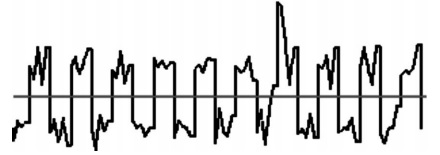
 Data Structure
Data Structure Networking
Networking RDBMS
RDBMS Operating System
Operating System Java
Java MS Excel
MS Excel iOS
iOS HTML
HTML CSS
CSS Android
Android Python
Python C Programming
C Programming C++
C++ C#
C# MongoDB
MongoDB MySQL
MySQL Javascript
Javascript PHP
PHP
- Selected Reading
- UPSC IAS Exams Notes
- Developer's Best Practices
- Questions and Answers
- Effective Resume Writing
- HR Interview Questions
- Computer Glossary
- Who is Who
What are noise impairments in Computer networks?
Transmission impairment occurs when the received signal is different from the transmitted signal. As we know, a signal can be transmitted as Analog signal or it can be transmitted as a digital signal.
In Analog signals due to transmission impairment the resulting received signal gets different amplitude or the shape. In the case of digitally transmitted signals at the receiver side we get changes in bits (0's or 1's).
Causes
There are various causes of transmission impairments, which are as follows −
- Noise
- Delay Distortion
- Attenuation Distortion
Let us discuss noise which is one of the causes for transmission impairments.
Noise
Noise is the major factor for the transmission distortion as any unwanted signal gets added to the transmitted signal by which the resulting transmitted signal gets modified and at the receiver side it is difficult to remove the unwanted noise signal. These noises are various kinds like shot noise, impulse noise, thermal noise etc.

Noise can be defined as unwanted energy from sources other than the transmitter. Thermal noise is caused by the random motion of the electrons in a wire and is unavoidable.
Consider normal signal as shown below −

Consider the Noise signal as shown below −

At the receiver side the sender signal combine with noise and represented as follows −

The above signals are reconstructed by sampling. Increased data rate implies "shorter" bits with higher sensitivity to noise.
Sources of Noise
The different sources of Noise are as follows −
- Thermal noise
- Intermodulation noise
- Crosstalk
- Impulse noise
Thermal noise
A kind of noise where the irregular electron movement in wire produces an additional signal. It is also called as white noise because the frequency encompasses over a broad range of frequencies.
Intermodulation noise
Here the signal transmission channel can share more than one signal and the intermodulation noise is generated.
For instance, consider two signals S1 and S2 generate signals of frequencies (S1 + S2) and (S1 - S2) that may interfere with the signals of the same frequencies sent by the sender. In any part of the communication system, intermodulation noise is introduced because of this situation.
Cross talk
Cross talk is an effect of one wire on another wire. One wire acts as a sending antenna and the other (transmission medium) acts as the receiving antenna.
For example − telephone systems, it is a common experience to hear conversation of other people in the background. This is known as cross talk.
Impulse noise
Impulse noise is irregular pulses or spikes generated by phenomena of power lines, lightning spark due to loss of contact in electric circuits and so on. It is a primary source of error in digital data.

